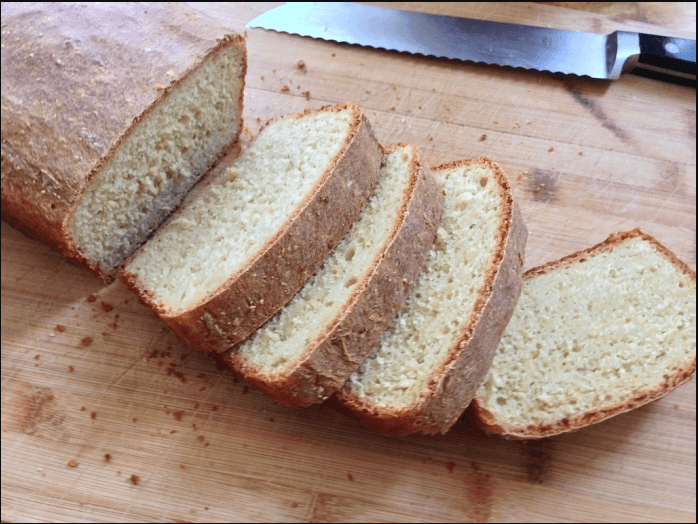Salt-rising bread is a special kind of bread that has been made in the US for a long time, especially in the Appalachian region. Farmers and people who lived off the land who didn’t have access to commercial yeast made it in the past.
Salt-rising bread is likely a type of bread that has been made in some form for hundreds or even thousands of years. This makes it hard to figure out how old it is. But the modern version of salt-rising bread that is popular in the United States is thought to have started in the late 1700s or early 1800s in the Appalachian region.
At this time, the people who lived in the area didn’t have access to commercial yeast, so they had to use natural fermentation to make their bread rise. Someone probably found the starter culture used to make salt-rising bread by accident when they left a mixture of milk and flour in a warm place and saw that it had started to ferment.
Over time, salt-rising bread became a staple in many Appalachian homes, and recipes were passed down from one generation to the next. Today, it is still a popular type of bread in the area and beyond. Many people look for traditional recipes and ways to make this tasty and unique bread.
The bread is usually made without salt. Making a starter culture is the first step in making salt-rising bread. Most of the time, milk, water, and flour are mixed together and left in a warm place for several hours. During this time, the bacteria in the mixture start to ferment and make lactic acid, which gives the mixture a sour taste and helps the bread rise. The dough is then kneaded and left to rise, usually for several hours or overnight.
The dense, moist texture of salt-rising bread is something that makes it stand out. This is because compared to bread made with commercial yeast, there isn’t as much gas used to make it rise. Also, the dough is usually very sticky, which makes it hard to work with.
Despite its challenges, salt-rising bread has remained a popular and beloved type of bread in many parts of the United States. Its unique taste and texture make it a favorite among bread lovers and people who like to bake in traditional ways.
Here is a traditional recipe for salt-rising bread:
Ingredients:
- 1/4 cup cornmeal
- 1/4 cup all-purpose flour
- 1/4 tsp baking soda
- 1 1/2 cups milk
- 1/4 tsp sugar
- 2 cups bread flour
- 1 tsp salt (optional)
Instructions:
- In a medium bowl, whisk together the cornmeal, all-purpose flour, and baking soda.
- In a small saucepan, heat the milk over low heat until it is warm but not hot. Add the sugar and stir to dissolve.
- Gradually stir the cornmeal mixture into the warm milk until it is smooth.
- Pour the mixture into a clean glass jar or bowl, cover it with a clean towel, and place it in a warm place (around 85-90°F) for 8-12 hours or overnight. This will allow the mixture to ferment and develop a strong odor.
- In a large bowl, combine the bread flour and salt (if using).
- Add the fermented mixture to the flour mixture and stir until it forms a sticky dough.
- Knead the dough for 10-15 minutes, until it is smooth and elastic.
- Shape the dough into a ball and place it in a greased loaf pan.
- Cover the pan with a clean towel and let the dough rise in a warm place for 2-3 hours, until it has doubled in size.
- Preheat the oven to 400°F. Bake the bread for 30-40 minutes, until it is golden brown and sounds hollow when tapped on the bottom.
- Remove the bread from the pan and let it cool completely on a wire rack before slicing and serving.
Note: This recipe is just one example of how to make salt-rising bread, and there are many variations depending on the region and the family tradition. Some recipes call for different ratios of ingredients or may include additional ingredients like butter or sugar.

